Mixer Gabriel Lundh Puts His Faith In Accentize
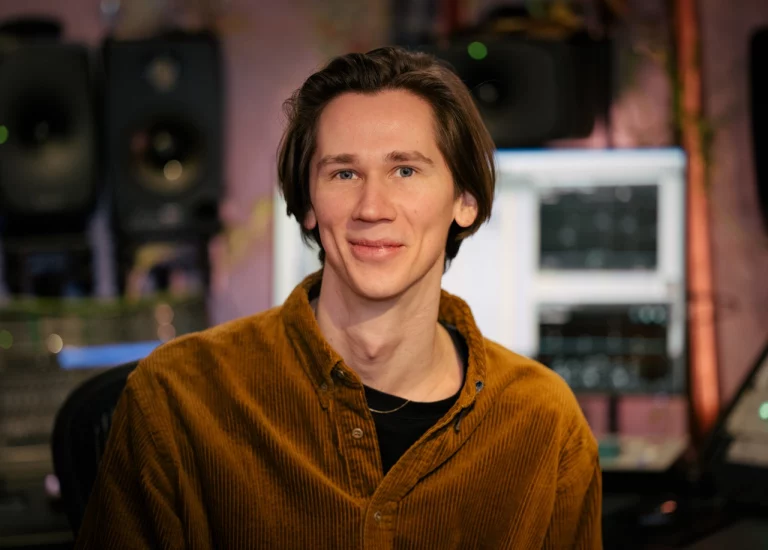
From a makeshift studio built in the family garage to founder of one of the first Dolby Atmos-equipped studios in Sweden, Gabriel Lundh always knew audio production was his calling. In fact, his enthusiasm and curiosity for the craft began so long ago you’d be forgiven for thinking this producer/mixer is much older than his 27 years. We spoke with Gabriel about his journey to establishing Stockholm-based the dome. studios, his pragmatic approach to life’s challenges and why the discovery of dxRevive has helped solve problems.
How did your journey begin? Were your parents musicians?
My parents were both interested in music. My mother played organ when she was young and going into high school, and my father has always played, but he was one of those that just ‘faked it’, he just plays and it sounds like he can, but he doesn’t really have any musical theory background knowledge. One of my brothers played the violin and my father guitar, so he said to me, we need a bass player. I was like, yeah okay, sure, and then I started playing bass. That’s sort of how I came into music and film and sound in general. Then my father wanted us to have somewhere to play so he rebuilt the garage into a garage studio type vibe. There were two rooms – a real garage and then a regular room. He therefore built a window in between so it was like a control room and on the other side, the recording studio room. We had a super basic setup with a Focusrite card, two simple small diaphragm mics, one cheap big condenser and a kick mic. Then slowly from there we grew, we bought some SM57s and we started being able to record a full drum set.
I started recording my rock band that I had with my brother Fredy and our friends Jonas and Axel, I was around 14 at the time. From there I started a high school which specialised in music and I started getting to know more and more people who were crazy good musicians. I was like ‘let’s do some recording projects together’. In those projects I was both playing and responsible for the recording and mixing process.
I’ve always loved the technical side of production so I saw myself getting moved more and more into sitting at the computer instead of practicing and realised that I’d probably end up working in production rather than playing. After high school, I took the opportunity to visit my family in New York where I took lessons and practiced bass for three months, focusing on playing and seeing whether I could actually be a bass player. During that time I realised that I wanted to be at the computer so as soon as I got home I basically stopped practicing and since then I have mainly played when I’ve recorded myself for projects and was able to edit my own playing into sounding like a real bass player, haha.
During this whole period, I was always into doing film production on the side; filming my friends doing extreme sports like skateboarding or skiing. Then I got to film for a big candy brand in Sweden who were doing an event and from there I eased into producing and filming event and commercial videos for companies. During high school and the whole music thing I realised that I needed money to buy music and sound equipment but it was very hard to make any money on doing projects in music and art film so I did a lot of freelance stuff – film work for estate agents, photographing stuff like employee photos for companies or photographing dental clinics. I managed to buy a better computer so I could do more advanced work. I bought more and more film gear until a point where I could spend the money on sound stuff instead and pay my rent.
After a year of freelancing from the apartment I got my first studio in Stockholm around seven years ago and started building from there. It was a very small six square metres room and that evolved into the next room which was around 12-14 square metres – that was actually the room that I first installed Atmos in. And two years ago I moved into the studio space where I now work.
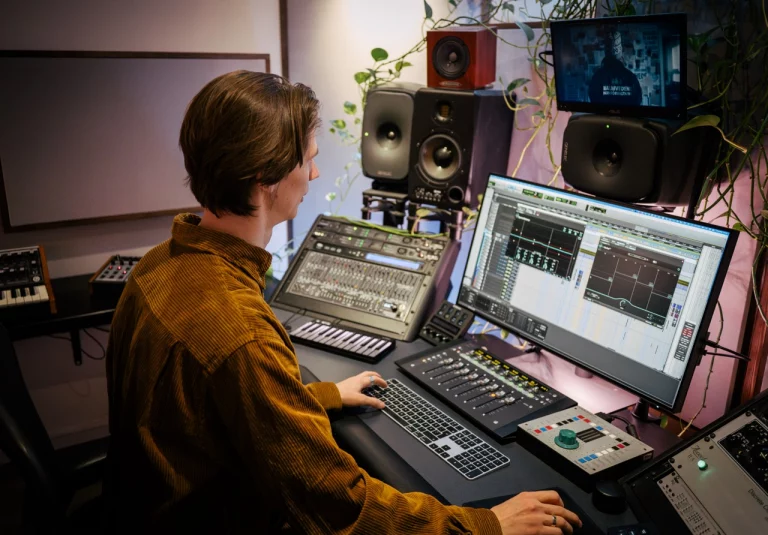
So filming and producing commercials was, in a sense, just a way for you to make money so that you could really do your first love, which was music?
Yeah music, and then I realised that film music mixing and film sound was sort of the perfect combination because then I could still be in the realm of film. I could have all my knowledge from codecs and formats and how the pipeline works, how sync works, how editors work and all that stuff, and still be based in Pro Tools. Around five years ago, I tried to phase out the filming and photographic work and instead started doing sound design for commercials, brands, and ad agencies. Everything was woven together into me being able to sit in my studio all day instead of going to the field to film or record something.
Was there a big break moment? Was there a point when you thought actually I can make this?
Honestly, I don’t think so, it was a super gradual phase. In fact, the last couple of weeks I’ve been teaching a course in sound design at the Royal College of Music, which was quite weird for me because I never went to college. Then I realised that what I wanted to contribute to them was not necessarily how to do sound design, it was how to work. Like how to not screw things up, I talked about backup solutions, I talked about how I look at my links in Incognito before I send them out to be sure that I don’t have access denied or sending the wrong links to the wrong clients and stuff like that. I was putting more effort into teaching them those types of tips alongside the teaching of sound design.
You sound incredibly pragmatic, you seem to take a very practical approach to life.
I think you described me really well there. That’s sort of how I’ve seen everything, like, okay, I need the new speakers, what’s the way there? Sort of doing every step on the way until I get there.
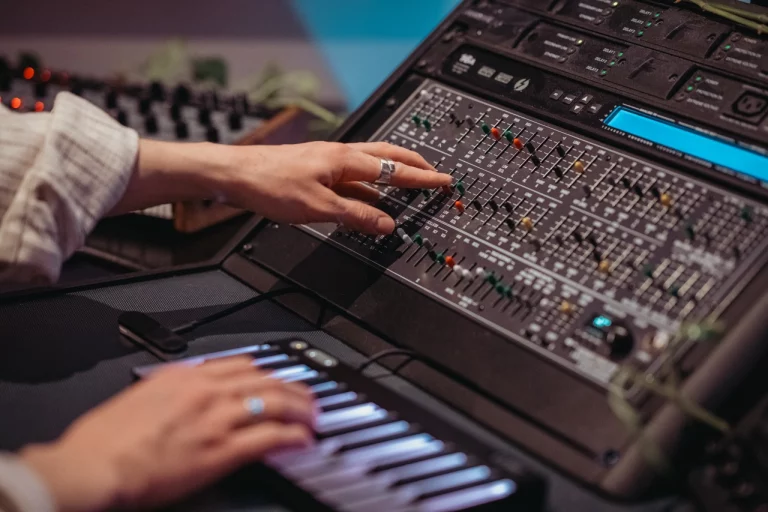
So was Atmos another one of those moments?
Yeah. It was actually a colleague of mine, Fredrik Jansson, who I’d been doing stereo work for, who said to me, what do you know about Atmos? This was back in 2019 when Atmos in the film world was already established but for the music world, it didn’t really start until the beginning of 2020. I was like, ‘I know nothing’ so I started to read up on it and just reading that object-based audio is channel agnostic got me excited. This means that you work and mix in for a sort of “ideal listening experience” and then it’s up to the consumer to decide how they want to listen to it. You are giving the best possible thing to the consumer instead of saying, hey, this is a stereo mix, if you have a 5.1 system you’re going to have to defer to some guesswork upmix that the AVR brand has designed. With Atmos, I can say, yeah, this is how the artist wanted it to be listened to in the most ideal setup, now it’s up to you as a consumer to decide if you want to have a downmix or listen to the full resolution version of it.
Let's talk about Accentize. How did you first hear about them?
I was starting on the horror movie ‘From Darkness’, the first feature film that I was doing all the sound for. I’ve been doing a lot of commercials and a few short films and been involved in the music side of TV shows and film, but this was the first feature film where I was responsible for the sound. The characters are out in the woods a lot, wearing winter clothes which are extremely noisy. Of course, the production company had made sure that they have the least noisy clothes, but they were still noisy.
Therefore I went on a hunt to find out what the latest and greatest audio restoration tech was. I Googled and first I found Spectral Balance and from that I found dxRevive Pro. The idea of using spectral balance was that I wanted to have a curve that helped me to achieve a consistent dialogue sound throughout the movie. I thought in my head that there must be a curve, there must be a spectral balance plugin, you know? Then I found dxRevive and started to try it out, and what really surprised me with dxRevive compared to other tools was that it was actually improving the sound and not only removing stuff.
What did you think when you first turned that knob up on a piece of your audio?
I thought it was incredible. (…) It was not only like, I can hear the dialogue, it also helps to EQ the dialogue. The most prominent thing that I feel when I use it is that it re-generates the “close mic’ed low end” if a take misses it because the boom had to be further away from the actor. So it’s sort of an EQ helper, in a weird way, sort of like Spectral Balance to even out the production audio throughout the movie.
If you haven't got noise issues, are you using Spectral Balance to try and get the dialogue to match across several tracks and stuff?
Spectral balance was actually slapped on the main dialogue bus. I was a bit afraid of putting all the dialogues to one bus and then putting Spectral Balance on it because I didn’t know how if the custom target curve that I’d captured would carry with the project when I switched computers when I went to the dub stage, but I tested it on my laptop before and it worked really well, both on the laptops Silicon chip and through Intel in my studio.
When I was starting to use dxRevive, I thought, ‘this is amazing’ but where it really gives you great help is when you start to use the multi band options. I always have the multi band function up, and then I started to learn when to use Retain and when to use the Studio algorithm. So, basically, when I went through the dialogue to do a cleanup, I had the uncleaned dialogue on another playlist for safety because I wanted to be able to go a bit harder than I would necessarily do sometimes just to see if it helps. This is maybe unorthodox, but I was thinking about it as blending, sometimes I did way less restoring on the boom, rather than the lav, and then I mixed those together.
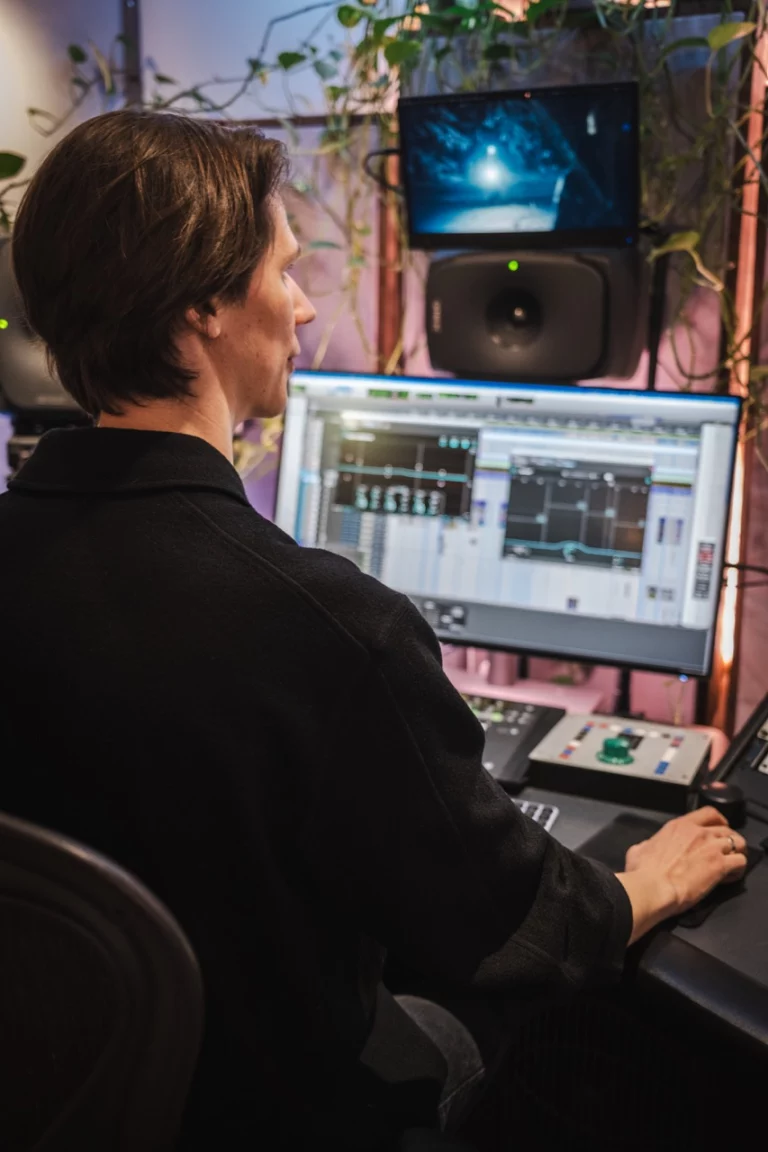
Coming back to the characters in the woods, were you having to deal with the usual lav problems of fabric rubbing on the mic and stuff?
Yes, quite often. But weirdly enough they were standing rather still when they were having long conversation parts and it’s a very silent movie to begin with – but the restoring process really helped me to get the intelligibility back when they were moving and talking at the same time.
I was actually bringing my girlfriend in, who is not into audio at all and wasn’t aware of restoration plugins and I looped a part of dialogue that was not too noisy, but still had some clothing noises. I went back and forth between the non-restored dialogue and the restored audio and she really preferred the restored version as it was just easier to focus on the story. I think that’s the huge thing here – it’s removing what’s not bringing out the story, in the dialogue.
Did you use Chameleon at all to match dialogue tracks in?
Yes, I actually did, and this is very unorthodox again, but there was one point in the process where I needed the restoration “sound” of dxRevive but it removed too much of the room. So I revived it and then I sampled the original room with Chameleon and brought back the room, and it worked!
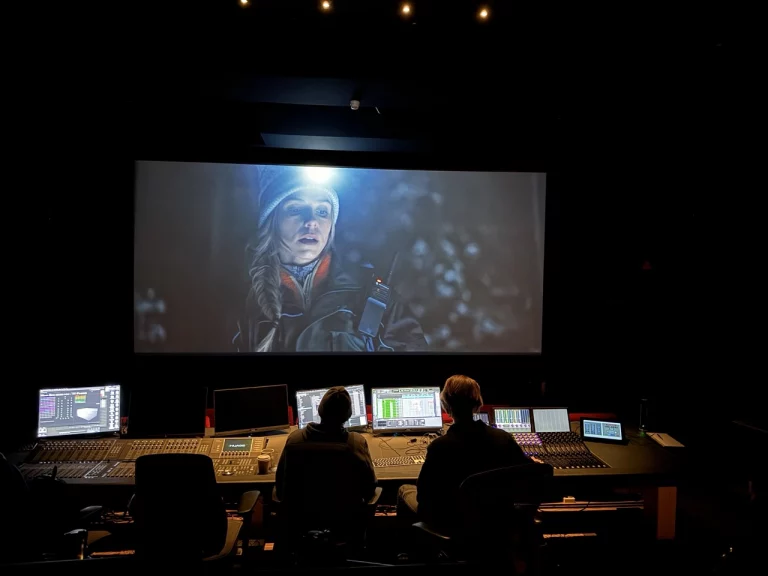
You effectively created an ADR version of the dialogue and then took the reverb off the production sound and placed it back in context?
Exactly, and I actually did that a few times because it was a necessity. I also used Chameleon for the ADR, which was fantastic. It was amazing when you just needed the vibe of the recording.
If it's on dialogue, do you tend to run Chameleon in mono or stereo?
Mono, because that’s what I wanted for this purpose. I wanted the room being in mono. I wanted to have that sense of being in a place rather than in a voiceover booth.
What one piece of advice would you give your 16-year-old self that you think has helped you get to where you are now?
I think the main thing is check your deliveries, you know? When you’re on a project and you’re tired and the clients have asked for five revisions and you’re like, I don’t want to continue anymore, to still go through the piece of music or whatever, just listen through before you send it. Listen through the bounce, know what you’re sending. That’s been crucial for me.
I actually always listen in Finder, it makes me listen more clearly, like a consumer than when you’re in the DAW and able to make changes directly. I think it’s to do with your eyes and your ears, it also feels like it’s “done”, in a weird sense. So, make sure to actually set up some “checking guards” to know what you’re sending at all times.
Photos by: Elisabeth Jubelin

